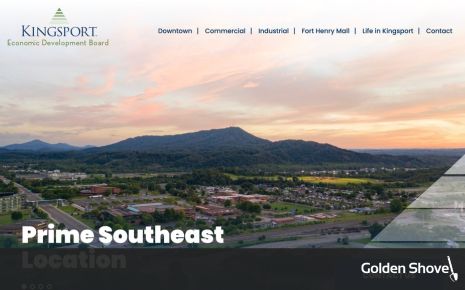8 Mistakes to Avoid When Crafting Your Economic Development Strategy

10 Feb 2025
News, Strategic Plan
The best economic development strategies improve the quality of life in a city, county, or state. They create a place where people are happy to live, work, and play. This means providing jobs with good wages, recruiting new businesses to meet local needs and expand employment opportunities, and offering a higher quality of life through infrastructure, education, and recreational developments. To strengthen the planning process and set a foundation for success, Golden Shovel Agency assists communities with crafting data-backed and relevant economic development strategies and associated goals.
Economic development strategies, particularly those formulated as part of a comprehensive plan, help drive decisions in all areas, so it’s essential to establish a solid framework from the beginning. Avoiding these pitfalls will ensure your planning sessions don’t miss the mark.
8 economic development strategy mistakes to avoid
1. Setting vague or broad goals
Goals are essential when devising economic development strategies. Without a target to work toward, efforts would be neverending or aimless. However, crafting overly broad or vague goals can be as ineffective as setting no goals at all. Zero in on SMART goals, or specific, measurable, attainable, relevant, and time-bound goals for the best results.
2. Collecting data without action
Data about your community, including the strengths, weaknesses, opportunities, and threats uncovered in a SWOT analysis, leads to better decision-making and goal-setting. If you have analytics on your website, track visitors, or conduct business surveys to maintain a pulse on the community, this data should inform economic development decisions. Avoid developing strategies at odds with accurate, verified data.
3. Keeping outdated or unrealistic goals
Speaking of goals and data. There is no need to stay stuck in a rut based on past precedent in an economic development organization or city. It can be hard to let go of “the way we’ve always done things,” but when results under the old ways are lacking after a reasonable timeframe, it’s time to refresh. Consult updated data and revisit your economic development strategies periodically to jettison plans and programs with reduced value.
4. Going it alone
The best comprehensive economic development strategies and plans are a group effort involving stakeholders from throughout a community. Local governments, economic development organizations, business owners, and the public can help inform a vision for growth through surveys, interviews, and community meetings. Bring this data to the drawing board with a core group of stakeholders to craft your strategic plans.
5. Avoiding partnerships
Economic development strategies are crafted at all levels – in specific districts in a city, the city, the county, the region, the state, and onward. Formal partnerships with select entities offer many opportunities to share resources and avoid duplication of effort. They can also lead to innovative cooperative efforts, such as an agreement to promote tourism or creating a funding stack to recruit a new manufacturer.
6. Minimizing infrastructure constraints
A SWOT analysis identifies strengths and weaknesses in a community, and it’s critical to take weaknesses seriously when making strategic plans. If your existing infrastructure can’t support certain goals, those goals must be deferred in favor of new ones focused on infrastructure improvements. For example, a community with limited water, drainage, or electric capacity may not be ready to recruit a major manufacturing facility. Economic development is a long game requiring incremental steps forward to meet big goals. In the interim, smaller goals can be tackled, such as growing existing businesses or focusing recruitment efforts on businesses capable of flourishing with current service levels.
7. Focusing on short-term gains
Quick wins can be a major boost in a city or county with a new vision for economic development and should be celebrated. However, immediate growth is often temporary, so don’t lose focus on the larger economic strategy. For example, a massive increase in sales tax revenue and employment can follow a disaster or a major construction project, but it’s a short-term increase with limited staying power. Take the opportunities increased revenues provide, such as financing for infrastructure improvements or funding for tax incentives, to create long-term wins.
8. Failing to plan for turnover
Economic development strategies require consistent follow-through from governmental entities, employees at economic development organizations, and other community partners. Failing to adequately document strategies, goals, and the individual actions involved in implementation makes it difficult for new administrations and workers to step into roles and maintain momentum. Succession planning is essential when crafting long-term strategies.
To avoid these missteps and craft the best economic development strategy possible for your community, engage the services of an outside entity. Golden Shovel Agency’s highly experienced staff brings decades of experience to the table and can help your agency set meaningful strategic plans. Contact us today to learn more.
More Topics





